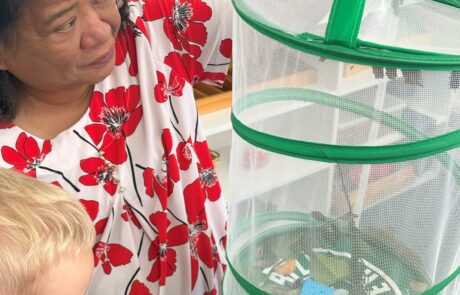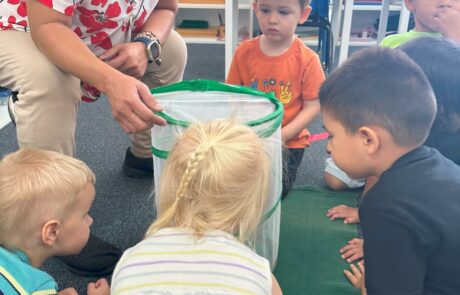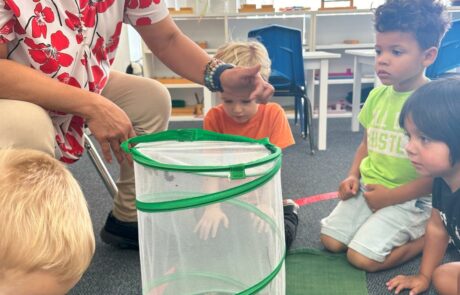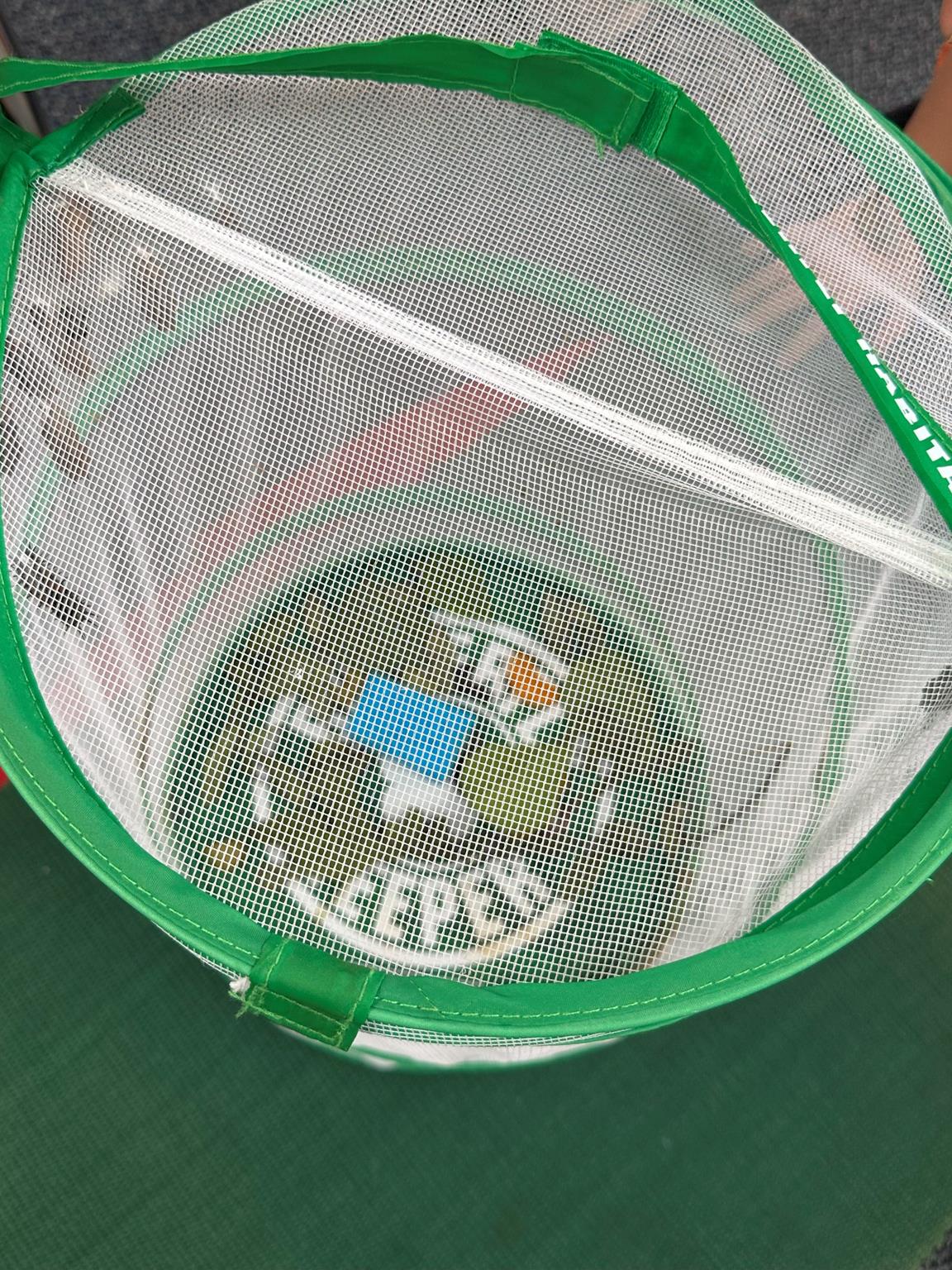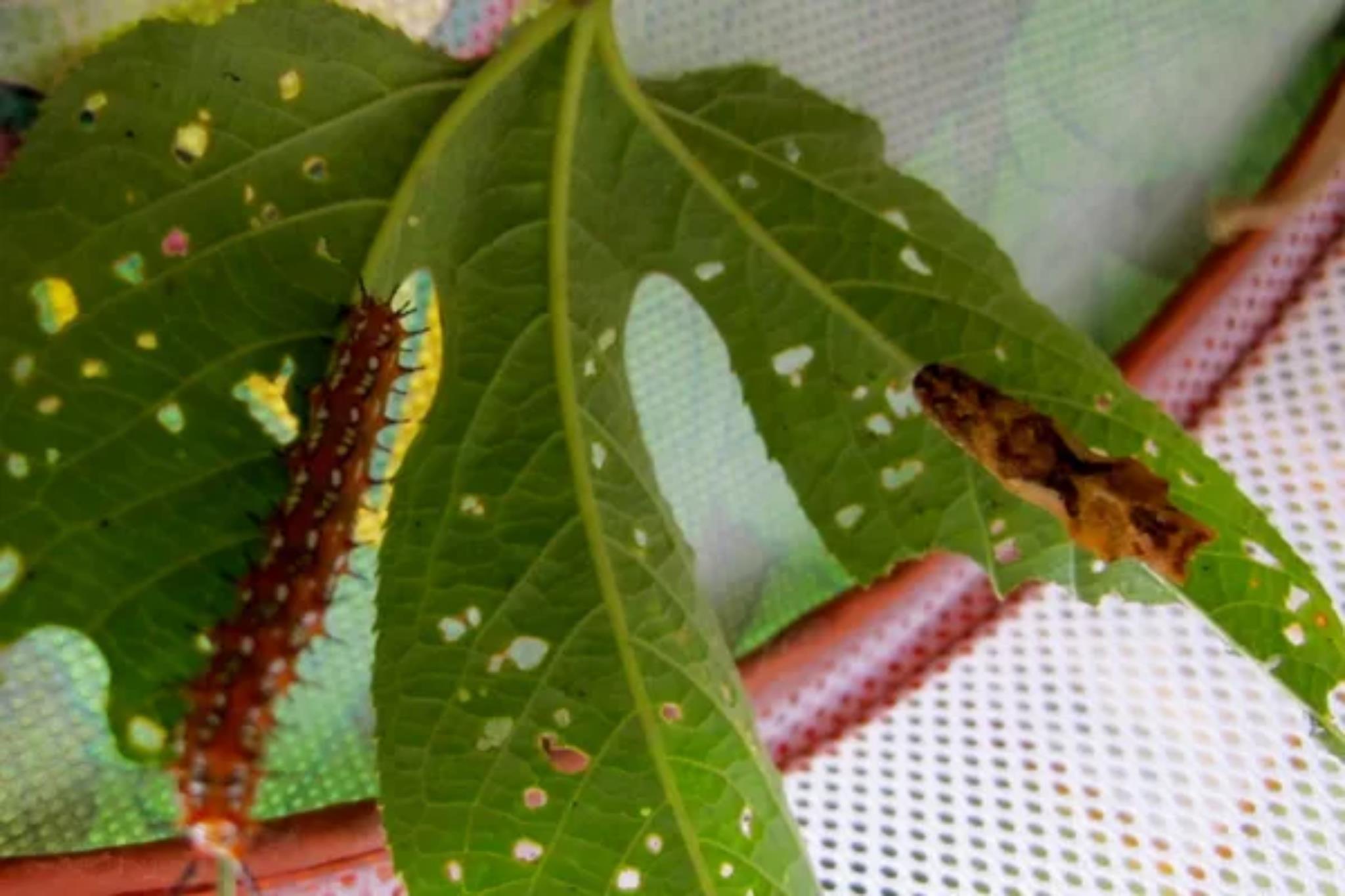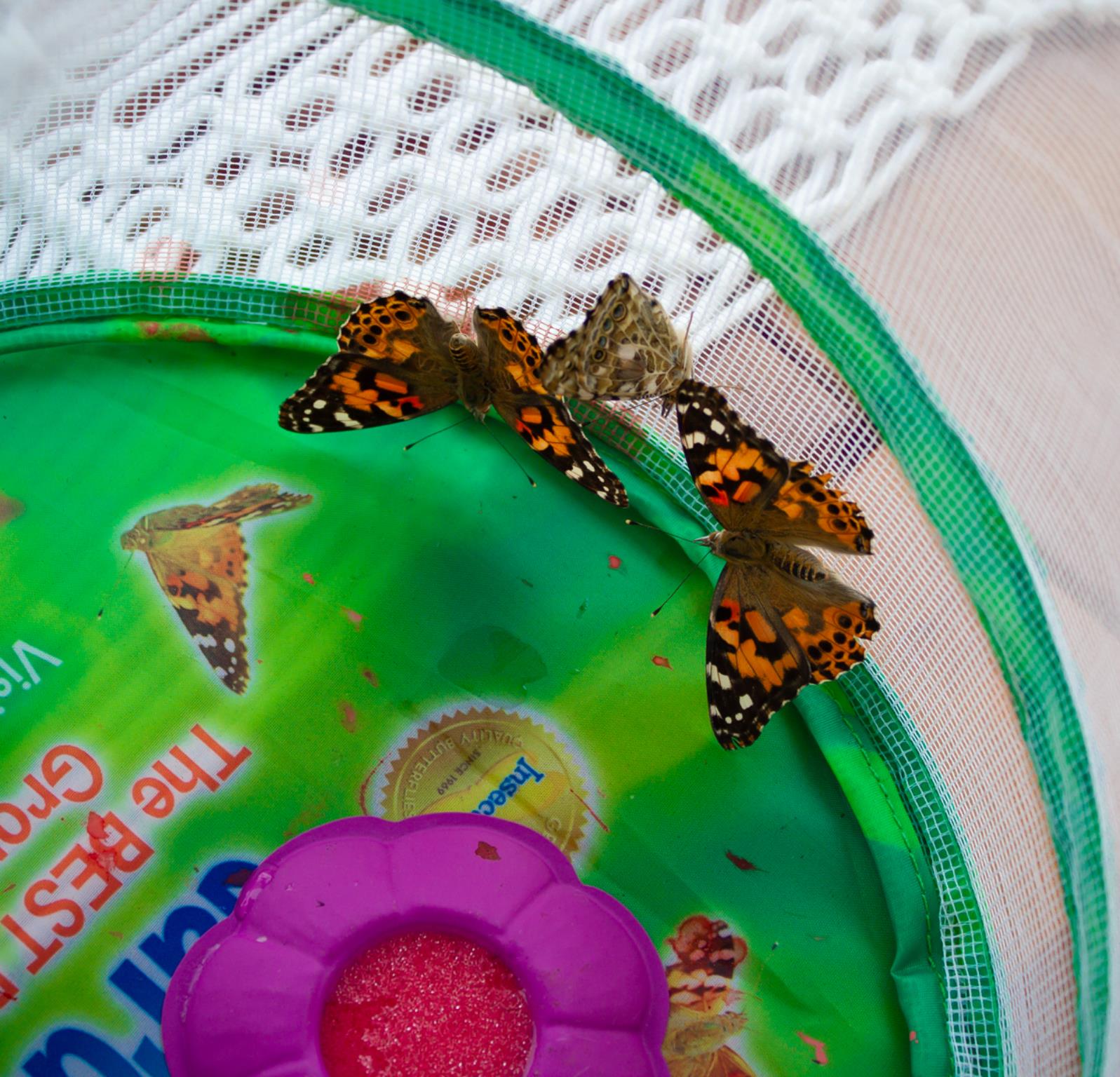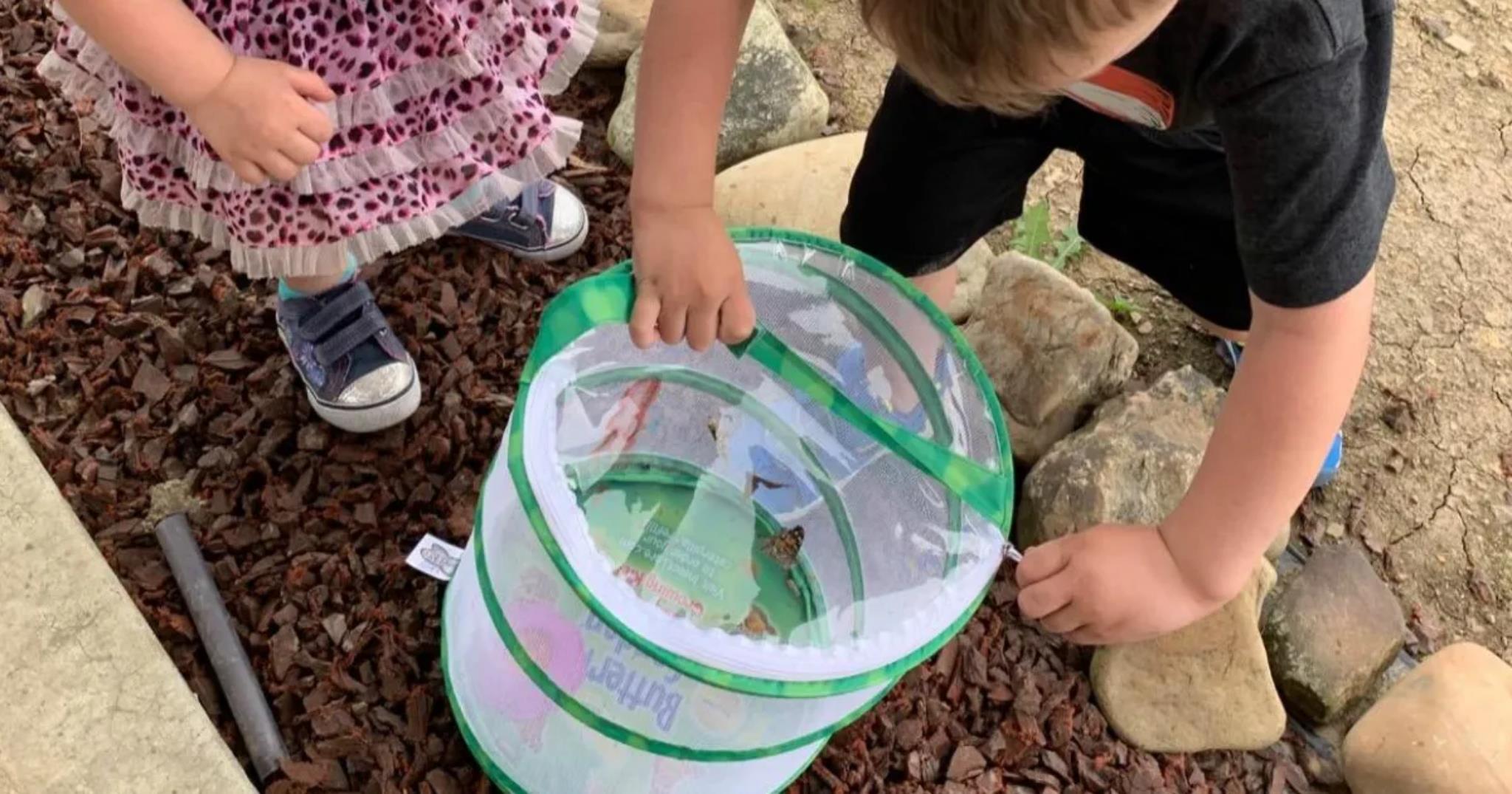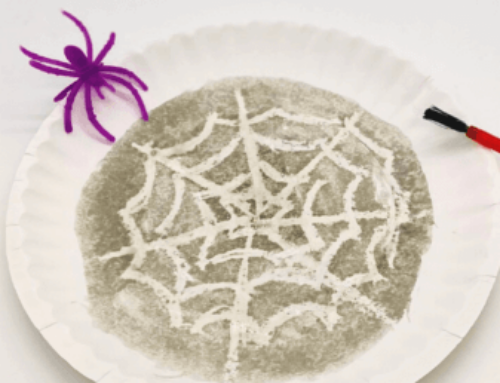The life cycle of a butterfly is one of the most magical transformations, and it is amazing for children to witness and learn about. It will give them a more hands-on experience in learning about biology and nature. Butterflies make our world come to life and they also play a crucial role in a healthy ecosystem.
Where to Find Caterpillars:
Every caterpillar has a specific diet, some eat more than one type of plant, but others eat only one specific plant, so it is important to make sure you bring your caterpillars inside with the correct food.
Look along the plant for signs of caterpillars. Signs include nibbled leaves and droppings on the leaves or ground. You can also look on the undersides of the leaves for eggs.
Common Caterpillars and Their Host Plants:
Tiger SwallowTail: White Ash, Black Cherry, Chokecherry, Sassafras
Black SwallowTail: Dill, Fennel, Parsley, Carrot, Queen Anne’s Lace
Monarch: Milkweed
Cabbage Moth Butterfly: Broccoli, Cauliflower, Turnip, Kale, Cabbage
Buckeye: Plantain, Gerardia, Snapdragon, Verbena
Gulf Fritillary: Passion Flower
Painted Lady: Thistle, Hollyhock, Nettle
Storing your Caterpillars:
Once you have found your caterpillars, it’s time to bring them inside. You want to place your caterpillars in a safe place- with plenty of food to sustain them while they grow. A butterfly tent is one of the most common places to keep your live caterpillars.
Going from Caterpillar to Butterfly
Caterpillars eat a lot and grow fast. Be sure to keep your host plant fresh and have plenty of it available for them to eat. Once they reach full size they will crawl to the top of their enclosure and anchor themselves there. Some butterflies, like the Cabbage Moth Butterfly, will make its chrysalis on the back of the leaves.
If you see one upside down and hanging that means it is getting close to forming its chrysalis. It is an amazing process to watch, so if you are around, keep an eye on them and you just might see the change happen.
Once they form a chrysalis, they will stay that way for 1-2 weeks depending on the type of butterfly.
You will see the chrysalis change color and darken as it gets closer to emerging. Sometimes you can see the wings inside too.
Often you will miss the actual emergence and find your new butterfly hanging from their chrysalis drying. Leave them alone for a few hours to allow their wings ample time to dry.
Once they start to move around in their enclosure, it is time to release them back into nature.
Releasing Butterflies into Nature
Be gentle when handling butterflies, as they are fragile. When you are ready to release them, take them out in the yard and place them on a tree or bush, preferably one that has flowers.
If you watch closely you might see them have their first meal using their long proboscis.
Make sure they are off the ground so that cats, birds or other predators won’t be as likely to see them. Depending on how rested they are, they may not fly yet, some will sit on the tree for a while before taking flight. It is very important that you wait till they are ready to fly out by themself or you may harm the butterfly.
And that’s it! You have successfully raised caterpillars and learned about the life cycle of a butterfly first hand.

